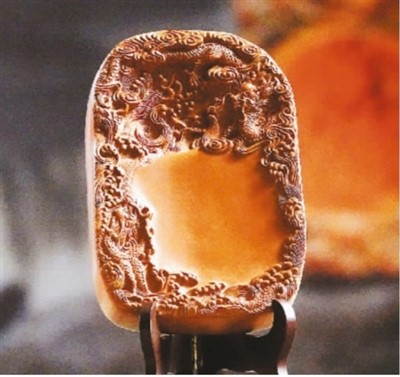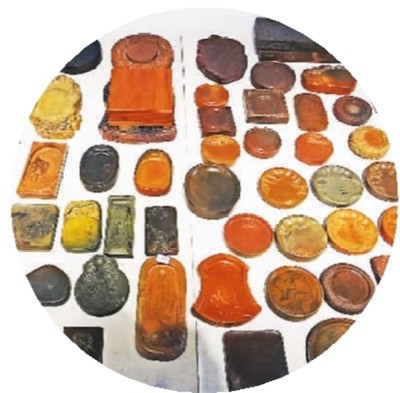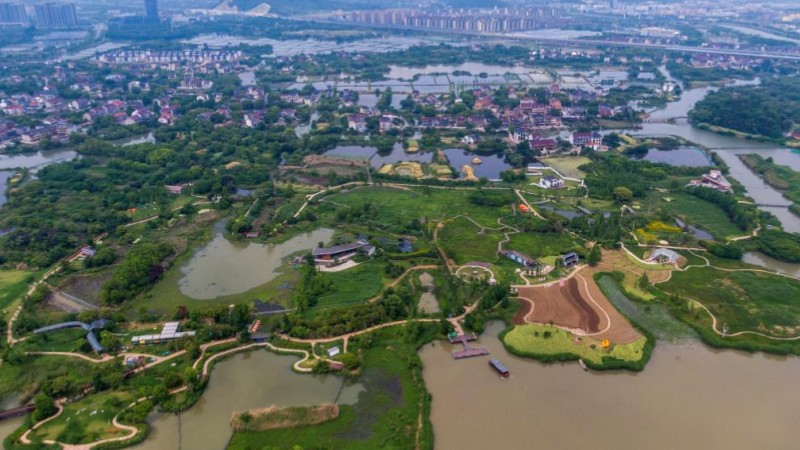Three generations of a family in N China's Shanxi revive Chengni inkstone
Chengni inkstone, one of the "four famous inkstones" in China, is known for its fine texture which can reduce harm done to the brush.

A Chengni inkstone created by Lin Tao, an inheritor of the craft of making Chengni inkstone in Xinjiang county, north China's Shanxi Province. (Photo/Gao Xinsheng)
Originally from the Western Han Dynasty (206 BC-25 AD), the craft of making Chengni inkstone was lost in the late Ming Dynasty (1368-1644) and early Qing Dynasty (1644-1911), but revived by Lin Yongmao and his son Lin Tao in Xinjiang county, north China's Shanxi Province after years of trial.
In 1984, Lin Yongmao came to work at the county's museum, where he read many books on cultural relics, including those on the Chengni inkstone, and decided to revive the time-honored craft.
It took the father and son two years to find suitable mud materials to produce Chengni inkstone. After much trial and error, they succeeded in making two Chengni inkstones in 1991. Three years later, their Chengni inkstones won a gold prize at the expo on China's famous inkstones.

Lin Yongmao (right) and his son Lin Tao make a Chengni inkstone. (Photo courtesy of the interviewee)
The father and son then refined the craft of making Chengni inkstone. It takes over a year and more than 10 steps to make a Chengni inkstone.
In 2008, the craft was listed as one of China's national intangible cultural heritages, and Lin Yongmao was recognized as a representative inheritor of the craft.
Lin Tao has developed a series of Chengni inkstone products, including those on Shanxi's culture. He attended various competitions and exhibitions at home and abroad with his inkstones to expand the influence of Chengni inkstone. Seven pieces of his works were awarded the Seal of Excellence for Handicrafts by the United Nations Educational, Scientific, and Cultural Organization (UNESCO).
To better inherit the craft of making Chengni inkstone, Lin Tao has dedicated himself to the cultivation of apprentices.

Lin Xiaolin, Lin Tao's son, works on a Chengni inkstone. (Photo/Gao Xinsheng)
To improve his team members' skills and broaden their horizons, Lin Tao has sent key team members to study at universities, including Tsinghua University and Peking University, on a regular basis.
A Chengni inkstone workshop established by Lin Yongmao and Lin Tao in Guangcun village, Xinjiang county now has one national-level inheritor of the craft of making Chengni inkstone and two provincial-level inheritors.
As the third-generation inheritor of the craft, Lin Xiaolin established a team to design and develop cultural and creative products about Chengni inkstone after returning from studying abroad in 2019.
The young inheritor also sells his cultural and creative products online and introduces the history, culture and technique of making Chengni inkstone through livestreams. He adds modern fashion elements to his products, making them functional yet decorative and well-received by young people. He also increases the colors of Chengni inkstone by controlling the temperature of the kiln.

Chengni inkstones designed by Lin Xiaolin. (Photo/Gao Xinsheng)
"Our team has introduced eye-catching products through continuous innovation, hoping to let more young people learn about Chengni inkstone and develop a passion for it," Lin Xiaolin said.
In recent years, Lin Tao has worked to build a cultural park of Chengni inkstone in Wangzhuang village, Xinjiang county to promote the integration of culture and tourism. Last year, the cultural park was recognized as a provincial-level culture industry demonstration park.
Lin Tao plans to continue cooperating with universities and colleges to inject more vitality into Chengni inkstone and make it a bright calling card.
Photos
Related Stories
Copyright © 2023 People's Daily Online. All Rights Reserved.









